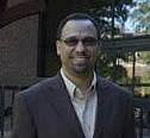Commentary on John 8:31-36
The concept of freedom is one of the most valued and debated ideas in Western democracies.
It is central to contemporary debates surrounding voting rights, freedom of speech, a woman’s right to choose, gun laws and multiple other issues. Because the United States is commonly referred to as the “land of the free” governed by its citizens, the language of freedom within the fourth Gospel resonates with Western, Christian ideas about spirituality and faith.
It is one reason why the Gospel of John has become so popular, arguably, the most popular canonical Gospel in the West. Yet, Jesus’ language of freedom couldn’t be more distinct from contemporary notions of freedom than the ancient, first-century practice of slavery is, now, distinct from our post-Civil War and post-Civil rights era.
This was a dialogue between Jesus and some of his fellow Jewish followers in Jerusalem. What it meant to be a descendant of Abraham took center stage, a common motif among early Jewish Christian followers of Jesus (cf. Matthew 3:9//Luke 3:8; Galatians 3:16). “For not all Israelites truly belong to Israel,” as Paul put it (cf. Romans 9:6-8).
Yet, some still recognized the significance ties to Abraham’s lineage as well: “For it is clear that he (i.e., Jesus) did not come to help angels, but the descendants of Abraham” (Hebrews 2:16; cf. Luke 1:54; Acts 3:25; 13:26). And, even Paul will boast in his attachment to Abraham, when comparing his missionary activity to that of others: “Are they descendants of Abraham? So am I” (2 Corinthians 11:22).
But the Jesus of the fourth Gospel took the discussion of Abraham’s ancestry to another level. In this account, some became believers in Jesus because of what he was teaching (8:31). Following the teaching of the Johannine Jesus would lead to “truth,” which in turn would lead to “freedom” (cf. 8:32).
Although this section began well (since many Jews believed), it didn’t end well; instead Jesus challenged whether Abraham or God was their father. Shockingly, he concluded that the devil was their father (8:44), primarily because of their opposition to his teaching. This may imply what Jesus stated earlier that he would not entrust himself to Jerusalem believers because he knew them well (cf. 2:23-24).
Belief in Jesus is key in the FG (cf. 8:24), and the lack of this kind of belief is what makes one a “sinner” (cf. 8:24). Indeed, one could argue that “belief” was the fundamental theme of the Gospel of John. The verb, “to trust” or “to believe,” occurs almost one hundred times and “to believe (in) Jesus” frames the entire narrative. John the Baptist came as a witness to Jesus, so that people might “believe through” Jesus (cf. 1:7) and those who did so would become God’s children (cf. 1:12).
And, the ending summarized the author’s intentions in writing this account: “these are written so that you may come to believe (or, continue believing) that Jesus is the Messiah, the Son of God, and that through believing you may have life in his name” (20:31).
Believing (in) Jesus was just the beginning point. Abiding in the truth of Jesus’ teaching was key (cf. 8:32). Truth (from the Greek word aletheia) is a common word in the fourth Gospel, occurring twenty-five times; in total, it appears only seven times in the Synoptic Gospels combined. In John, it referred to Jesus’ teaching, Jesus himself (14:6), and what the Spirit would continue to teach as well (16:13).
Christ, the logos, is “full of truth” (1:14, 17), a truth — in the Johannine world — that was juxtaposed with the Law (cf. 1:17). To be sure, unlike the Synoptic Gospel Jesus, the Johannine Jesus was not a law-abiding Jew. The Johannine community began the difficult task of distinguishing themselves from their Jewish neighbors by removing Jesus from his Jewish context and de-emphasizing his Jewish prophetic role.
In chapter 8, there is a concentration of “truth” language. Continuing in Jesus’ teaching leads to truth (8:32), a truth that Jesus “heard from God” (8:40), and would be followed by the true children of Abraham (8:39). Furthermore, Jesus’ testimony to truth was the primary reason he came into the world (18:37), to teach the truth that will lead to freedom (8:32), and will make people holy (cf. 17:17, 19). According to John, Jesus is “the way, and the truth, and the life” (14:6). The teaching about the kingdom of God — central to Jesus’ mission and teaching in the Synoptic portrayals — is basically absent from the fourth Gospel (cf. John 3:3, 5; 18:36 [3x]).
Our passage was situated in the middle of a series of teachings within the temple area (cf. 8:20). The Pharisees, who were associated with the temple (cf. 7:32) questioned Jesus’ self-testimony (cf. 8:13). Jesus responded by discussing his intimate relationship with God. Others believed him because of his teaching (cf. 8:30). As a side-note, the narrator implied that Jesus could be arrested for this type of discussion (cf. 8:20). Jesus claimed that he and God shared the same thoughts (cf. 8:16, 18), which explained why he spoke only what God told him to say (cf. 8:26, 28).
Following our passage under discussion is a continuation of Jesus’ challenge to the people’s ties to Abraham. In 8:37, there’s a significant shift: how could these believing Jews (cf. 8:31) also be the ones attempting to kill Jesus? Strikingly, Jesus began to question their loyalty (cf. 2:23-24). Jesus reinterpreted what ancestry in Abraham’s family meant. It was about proper actions (8:39), which, for Jesus, meant following his teaching. True children of God would follow Jesus (8:42, 47). If they did not obey Jesus, this proved that they were children of the “devil” (8:44), who blocked them from hearing and following Jesus.
Then, John’s Jesus elevated himself above Abraham and created more distance between himself and the children of Abraham (8:56-59): “before Abraham was, I am” (8:58). This, too, moves us beyond the theological tradition of the Synoptic Gospels. So, the temple leaders — those the fourth gospel labeled as “the Jews” — attempted to stone him (8:59).
It is worth taking note of the language of “the Jews” within the fourth Gospel, a rhetorical feature distinctive to this canonical Gospel. The reference occurred seventy-one times in John. The author used the term as a generic rhetorical reference for Jesus’ opposition (e.g., 8:22, 52). In the last reference in the Gospel, the narrator left us with this statement: “the doors of the house where the disciples had met were locked for fear of the Jews” (20:19). In the section surrounding our passage, we find the following statements:
- The “Jews” wanted to kill him (cf. 7:1);
- The crowds “feared the Jews,” so they kept their belief in Jesus to themselves (cf. 7:13; 9:22);
- The “Jews” thought Jesus had a “demon” (8:49, 52); basically, Jesus thought the same thing about them (cf. 8:44);
While the NRSV fairly consistently translates the Greek term, Ioudaioi, as “Jews,” some English translations attempt alternatives based on literary contexts. For example, the Common English Bible uses “Jewish leaders” for the term in 8:22, probably in light of the temple setting and the Pharisees’ question (cf. 8:13). In addition, the CEB uses “Jewish opposition” in 8:49 and 8:52, as a way to distinguish this group from the Jews who were part of Jesus’ group.
But the Greek — like the NRSV — maintains an ambiguous generic label without adjectival qualifiers. For close readers of the story, it should not be overlooked that Jesus and his disciples were Jews as well, which the FG specifically recognized about Jesus himself (cf. 4:9)! And, even here, at 8:31, many Jews also believed in Jesus. This type of rhetoric informs us more about the antagonism the Johannine Christian community experienced during the author’s day than about the lifetime of Jesus.
On the one hand, this is a story about the freedom attached to believing in Jesus. On the other hand, this is also a story about the way to depict one’s belief in Jesus over against those who choose not to follow. Granted, the tension between the early Jewish Christian community and their Jewish neighbors was high, but we should not transfer this Gospel’s rhetorically negative depiction of the other to our contemporary setting.
Does the freedom we find in Christ allow us to abuse and ridicule the “freedom” others have to make their own religious choices? How many of us are Christian today because of family upbringing and tradition and not simply due to individual choice? Simply because our Jewish, Muslim, and non-religious neighbors do not choose to follow Jesus (or, our version of that message) does not make them the “children of the devil”? Nor should our depictions of their lives display such rhetorical flourishes. Our use of John’s Jesus must somehow find a way to pass along a broader message of the truth that makes us all free.


October 26, 2014